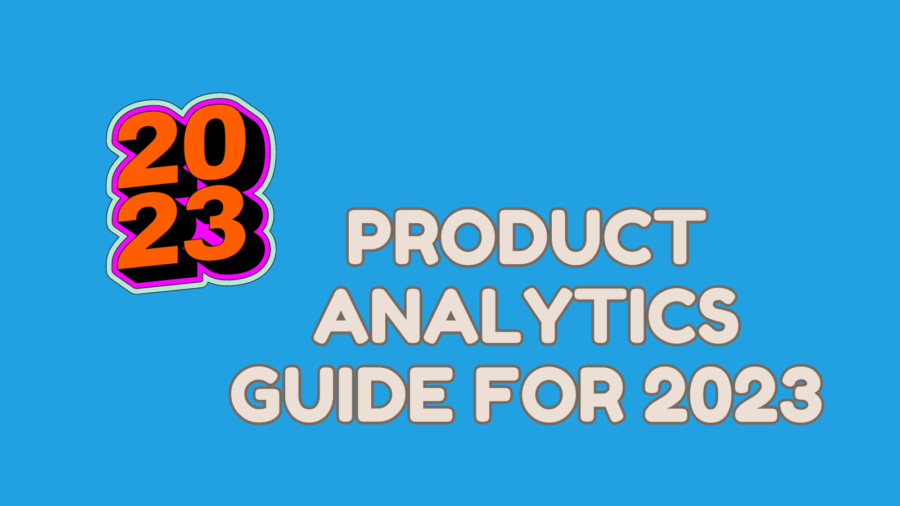The effective utilization of product analytics has become instrumental in driving informed decisions and steering the trajectory of companies toward success. With the intricacies of user behavior and preferences shaping the foundation of business strategies, the precise tracking and analysis of customer interactions with digital products have emerged as indispensable tools for sustainable growth and innovation. However, the mere collection of user data is no longer sufficient. In this context, the meticulous development and implementation of comprehensive tracking plans have risen to the forefront, assuming a pivotal role in ensuring the integrity, accuracy, and reliability of the data being harnessed. These robust tracking plans serve as comprehensive roadmaps, guiding businesses in navigating the intricate web of user behaviors and, ultimately, facilitating the extraction of actionable insights instrumental in fostering strategic decision-making and ensuring competitive advantage.
Amidst the rapidly evolving landscape of digital products and services, the indispensability of tracking plans has become increasingly pronounced. They not only act as bulwarks against the potential pitfalls of data inaccuracy and inconsistency but also foster seamless collaboration between multidisciplinary teams, enabling cohesive analyses and comprehensive reporting. Moreover, they play a key role in heightening the overall user experience, providing businesses with the capability to identify and address pain points, optimize user journeys, and deliver personalized, tailored experiences that resonate with their target audience. Beyond this, the imperative of adhering to stringent data protection regulations and ensuring data governance has placed tracking plans at the forefront of regulatory compliance, instilling trust and credibility among customers and stakeholders alike. As the digital realm continues to evolve, navigating the intricacies and nuances of tracking plans is not just a requisite for sustained success but a strategic imperative for businesses aiming to remain agile and responsive to the ever-changing dynamics of the digital marketplace.
What Are Tracking Plans?
Tracking plans serve as the lynchpin that orchestrates the seamless integration of data collection, analysis, and reporting. These comprehensive frameworks encompass a meticulously structured document delineating a holistic data-tracking blueprint within a digital product or service. Essentially, tracking plans outline a systematic approach to capturing and interpreting user interactions, behaviors, and events, with the primary goal of comprehensively understanding and optimizing the user journey.
A well-crafted tracking plan is characterized by its detailed event definitions, encompassing an exhaustive array of user actions such as clicks, scrolls, sign-ups, purchases, and more. These events are meticulously identified, categorized, and prioritized based on their significance in the overarching business objectives and key performance indicators (KPIs). Furthermore, tracking plans delve into the intricate web of event properties, which offer nuanced insights into the contextual attributes associated with each user action. These properties provide a deeper understanding of user preferences, demographics, geographical locations, and other pertinent variables that are instrumental in deciphering the intricacies of consumer behavior.
Additionally, tracking plans encapsulate the intricacies of data sources and tools, providing a comprehensive overview of the technology stack required for seamless data collection, storage, and analysis. From the integration of analytics platforms and customer relationship management (CRM) systems to the implementation of custom tracking codes and application programming interfaces (APIs), these plans meticulously chart out the technological infrastructure necessary for a robust data-driven approach.
Moreover, tracking plans prioritize data governance and privacy compliance, adhering to the stringent regulatory frameworks that govern the collection, storage, and processing of user data. With the advent of global data protection regulations such as the General Data Protection Regulation (GDPR) and the California Consumer Privacy Act (CCPA), tracking plans play a pivotal role in safeguarding user privacy and confidentiality, fostering a culture of trust and transparency between businesses and their clientele.
Above all, a comprehensive tracking plan is a living document that undergoes continual refinement and optimization. It encapsulates the dynamic nature of user behaviors and market trends, allowing businesses to adapt and evolve their tracking methodologies in tandem with the ever-changing demands of the digital landscape. Through meticulous documentation, regular updates, and proactive maintenance, tracking plans serve as dynamic blueprints that empower businesses to glean actionable insights, foster meaningful engagements, and drive sustained growth in an increasingly competitive marketplace.
Critical Components of a Tracking Plan
- Event Definitions: Clearly defined events, such as clicks, page views, sign-ups, and purchases, relevant to the product’s key performance indicators (KPIs).
- Event Properties: Specific attributes associated with each event, providing context and additional information for analysis. For instance, in an e-commerce platform, event properties might include product category, price, and customer demographics.
- Data Sources and Tools: Identification of the tools and platforms used for data collection, analysis, and visualization, ensuring seamless integration and data consistency.
- Data Governance and Privacy Compliance: Guidelines for data handling, storage, and protection to ensure compliance with relevant data privacy regulations and maintain customer trust.
- Documentation and Maintenance: Regular updates and documentation of any changes or additions to the tracking plan, along with a process for ongoing maintenance and review to adapt to evolving business requirements.
The Significance of Tracking Plans in Product Analytics
- Data Accuracy and Consistency: The meticulous structuring of tracking plans ensures that data collection is precise and consistent across various touchpoints and platforms. This adherence to a standardized tracking methodology mitigates the risks of data discrepancies and inaccuracies, laying the foundation for robust and reliable insights that inform critical business decisions.
- Effective Analysis and Reporting: By defining the specific events and properties to track, businesses can focus on gathering data that directly aligns with their core business objectives. This streamlined approach to data collection facilitates more effective analysis and reporting, enabling businesses to extract actionable insights that drive informed strategies and tangible results.
- Cross-Functional Alignment: A well-crafted tracking plan is a unifying force, fostering collaboration between product development, engineering, marketing, and analytics teams. By providing a common framework and vocabulary for data collection and analysis, tracking plans enable multidisciplinary teams to work in synergy, fostering a holistic understanding of user behavior and preferences across the organization.
- Enhanced User Experience: Tracking plans empower businesses to gain a comprehensive understanding of user behavior, enabling them to identify pain points, optimize user journeys, and deliver personalized experiences that resonate with their target audience. By leveraging the insights derived from tracking plans, businesses can fine-tune their products and services to align with user expectations, ultimately enhancing customer satisfaction and loyalty.
- Regulatory Compliance and Data Governance: In an era marked by heightened data privacy concerns and stringent regulatory mandates, tracking plans play a pivotal role in ensuring compliance with data protection regulations. By integrating privacy-centric protocols and adhering to ethical data collection practices, businesses can foster a culture of trust and transparency, solidifying their reputation as responsible custodians of user data.
- Strategic Decision-Making: Leveraging the insights gleaned from a robust tracking plan, businesses can make informed, data-driven decisions that align with their long-term strategic goals. Whether it pertains to product development, marketing campaigns, or customer engagement strategies, tracking plans provide the necessary groundwork for informed decision-making that drives sustained growth and fosters a competitive edge in the market.
- Continuous Improvement and Innovation: By establishing a feedback loop through comprehensive tracking, businesses can continually assess their performance, iterate on their strategies, and drive innovation within their product offerings. Tracking plans enable businesses to stay attuned to evolving consumer preferences, market trends, and technological advancements, allowing them to remain agile and adaptive in an ever-evolving business landscape.
Best Practices for Developing an Effective Tracking Plan
- Collaboration Across Teams: Foster cross-functional collaboration by involving diverse teams such as product managers, engineers, data analysts, and stakeholders in the development and implementation of the tracking plan. Encourage regular communication and knowledge-sharing to ensure comprehensive coverage and alignment with overarching business goals.
- Thorough Research and Understanding: Conduct comprehensive research and analysis to gain a deep understanding of user behaviors, market trends, and industry benchmarks. This foundational understanding serves as a compass for designing a tracking plan that is tailored to the specific needs and dynamics of the business and its target audience.
- Regular Review and Updates: Embrace a culture of continual improvement by regularly reviewing and updating the tracking plan. Stay attuned to shifts in user behavior, technological advancements, and market trends, ensuring that the tracking plan remains relevant, adaptable, and in sync with the evolving landscape of the digital marketplace.
- Data Privacy and Security Compliance: Prioritize data privacy and security by adhering to the highest standards of data protection and privacy compliance. Integrate robust data security protocols, encryption mechanisms, and access controls within the tracking plan framework to safeguard sensitive user information and ensure compliance with global data protection regulations.
- Clear Documentation and Communication: Maintain a comprehensive and accessible documentation repository that outlines the intricacies of the tracking plan, including detailed event definitions, tracking parameters, and implementation guidelines. Foster transparent communication and knowledge-sharing across the organization to ensure a shared understanding of the tracking plan’s objectives and methodologies.
- Testing and Validation Protocols: Implement rigorous testing and validation protocols to ensure the accuracy and reliability of data collected through the tracking plan. Conduct thorough quality assurance checks, A/B testing, and data validation exercises to identify and address any inconsistencies, anomalies, or data discrepancies, ensuring that the insights derived from the tracking plan are credible and actionable.
- Scalability and Flexibility: Design the tracking plan with scalability and flexibility in mind to accommodate the evolving needs of the business. Anticipate future growth, technological advancements, and market expansions, and incorporate scalable tracking infrastructure that can seamlessly adapt to changing business requirements and user behaviors without compromising data accuracy or collection efficiency.
- Training and Empowerment: Provide comprehensive training and empowerment initiatives to equip employees with the necessary skills and knowledge to leverage the tracking plan effectively. Foster a culture of data literacy and empower teams to harness the full potential of the tracking plan, encouraging them to derive actionable insights and make informed decisions that drive business growth and innovation.
In conclusion, the intricate realm of product analytics hinges on the meticulous implementation of robust tracking plans, which serve as the cornerstone for data-driven decision-making and sustainable business growth. By adhering to best practices and prioritizing collaboration, regular review, and compliance with data privacy regulations, businesses can harness the full potential of tracking plans to gain a comprehensive understanding of user behavior, optimize user experiences, and drive strategic innovation within their digital products and services.
The significance of tracking plans extends far beyond mere data collection, encompassing their pivotal role in fostering cross-functional alignment, enabling effective analysis, and facilitating informed, strategic decision-making. As businesses navigate the dynamic landscape of the digital marketplace, leveraging insights derived from tracking plans becomes imperative for staying competitive and responsive to evolving consumer preferences and market trends.
Embracing a proactive approach to tracking plan development, maintenance, and optimization is key to unlocking the full potential of product analytics. By fostering a culture of continual improvement, data-driven decision-making, and user-centric innovation, businesses can leverage the power of tracking plans to not only drive sustainable growth but also foster meaningful and lasting connections with their customer base. Ultimately, the integration of comprehensive tracking plans within the fabric of product analytics empowers businesses to stay agile, adaptive, and poised for success in an ever-evolving and competitive business landscape.




